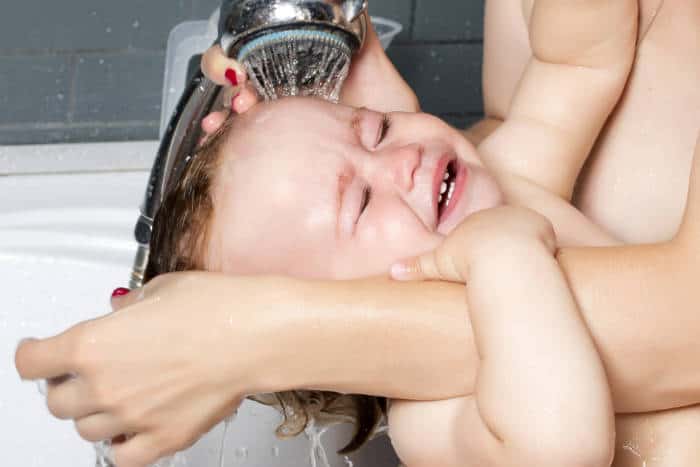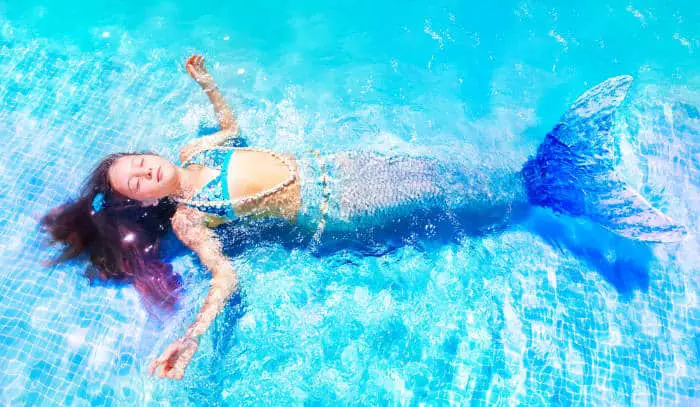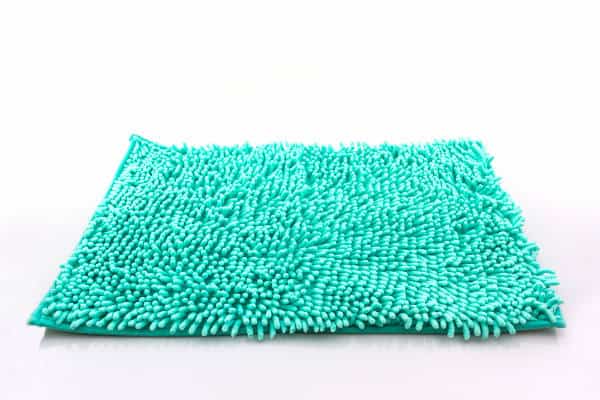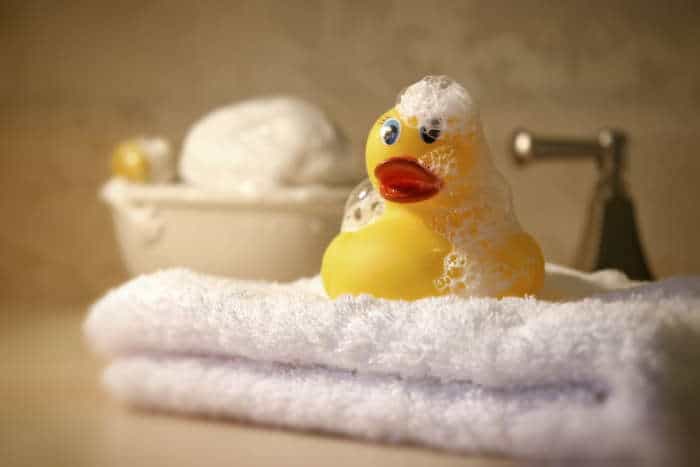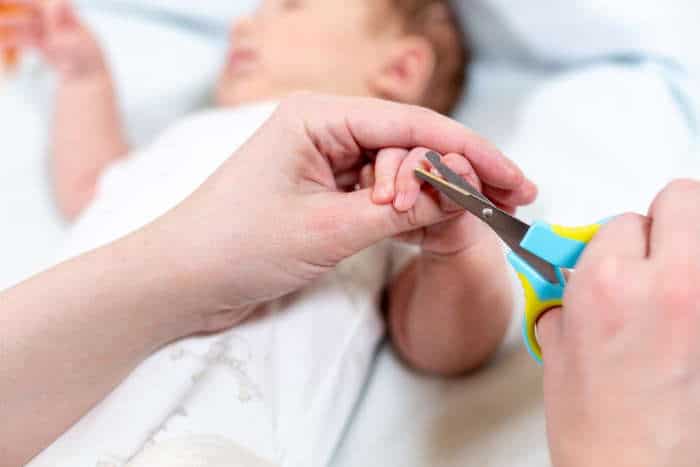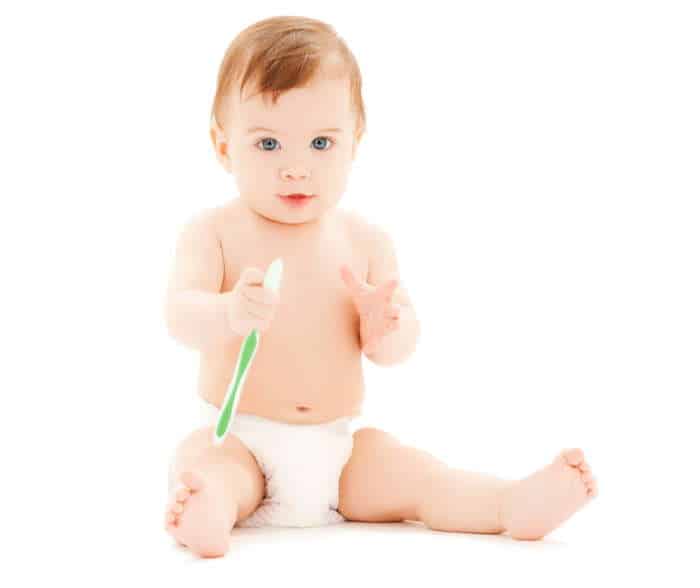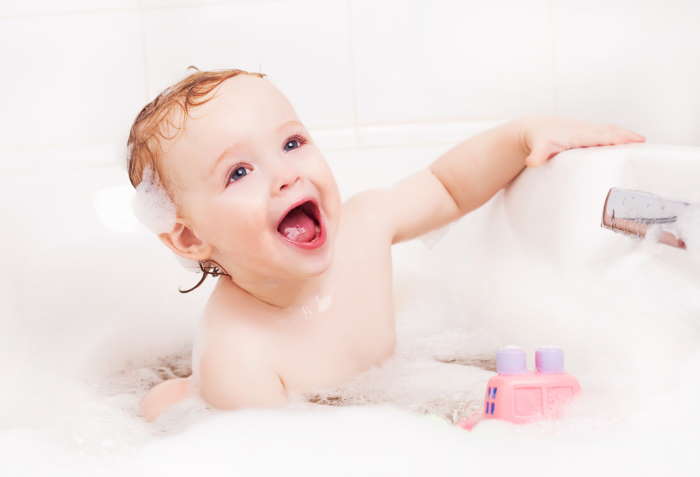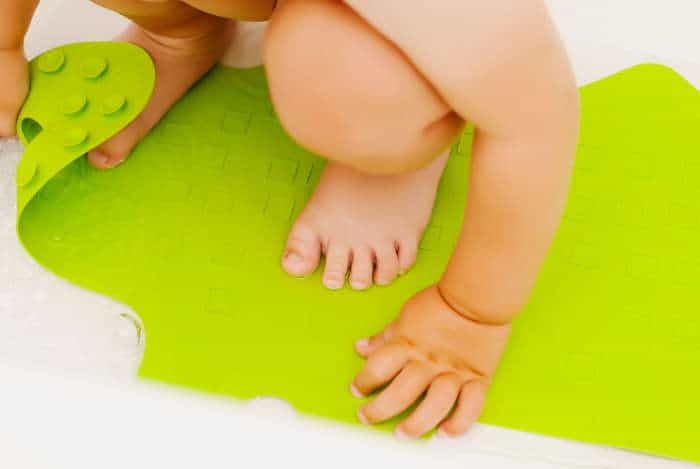Is there anything cuter than a baby covered in bath suds? We don’t think so either.
Baths are a wonderful addition to any bedtime routine and a great way for your baby to enjoy some supervised splash time.
But what products do you use on your baby’s sensitive skin, if any? What are you supposed to look for and what should you avoid?
There are certain logistics you need to figure out before establishing the perfect bath routine – including which bubble bath works best for your baby. Hey, we’ve got bubble problems covered.
Continue reading to learn when to start using bubble bath, which ingredients to avoid, and even get a list of our favorite safe bubble baths!
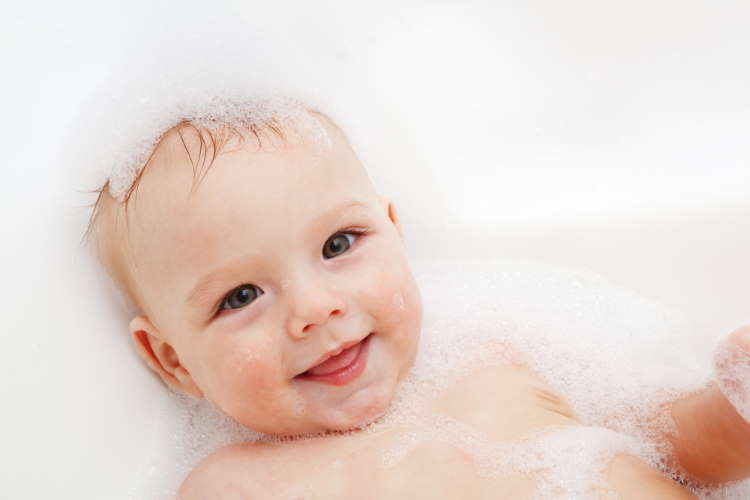
Our picks for the best baby bubble bath!
- Johnson’s Paraben-Free Baby Bubble Bath – Most Trusted Brand – The tear free bubble bath formula trusted by parents worldwide for decades
- Babo Botanicals Lavender Meadowsweet Calming Baby Bubble Bath & Wash – Most Soothing Bubble Bath – Lavender bliss, but watch for tears…
- Lil’ Leona 3-in-1 Baby Bubble Bath – A great 3 in 1, (shampoo, body wash and bubble bath), but not tear free or budget friendly
- Babyganics Bubble Bath – Tear free, ethical and budget friendly
Note: Our individual reviews are below, but you can also click any of the links above to check current prices on Amazon and other retailers
Table of Contents
Our Best Baby Bubble Bath Picks
Most Trusted Brand | Johnson’s Paraben-Free Baby Bubble Bath
Okay, raise your hand if you grew up with Johnson’s baby products at home. I can’t see you, but I sense that a lot of hands were raised. I remember seeing a big bottle of Johnson’s baby oil in almost every room in our house growing up. And my mom shook Johnson’s baby powder on us like she was frosting a cake. Hey, it was the 90’s. It was almost like most parents associated Johnson’s products with being the only line of baby products back then.
Many parents today still use Johnson’s baby shampoos and washes for their own babies. And we don’t blame you; it’s been trusted for decades.
This new and improved Johnson’s bubble bath formula is gentle enough for everyday use. It is hypoallergenic and tear free. In fact, the company claims the formula to be as gentle on your baby’s eyes as pure water. They changed a few things and now have a 50% shorter ingredient list on the back of the bottle. There are no parabens, phthalates, sulfates, or dyes in here.
We commend Johnson’s for making their formula more user-friendly, but there’s still room for slight improvement. This bubble bath doesn’t produce much bubbles. It feels more like a body wash. But hey, you get a clean baby at the end.
What we liked:
- Made from a brand that is trusted by parents around the globe for decades
- Very reasonably priced
- Free from parabens, sulfates, artificial dyes, and sulfates
- Hypoallergenic
What we didn’t:
- Doesn’t produce many bubbles
- This might just be a personal issue, but I prefer bubble bath bottles with lids instead of pumps to make pouring easier
Best soothing bath | Babo Botanicals Lavender Meadowsweet Calming Baby Bubble Bath & Wash
Get ready to be swept away into a meadow of sweet purple lavender because this bubble bath delivers 100% on scent and relaxation. Babo Botanicals uses organic meadowsweet flower extract for the scent; it has antiseptic and anti-inflammatory properties. Vegan friendly, cruelty free, organic, and certified B corporation (certification means a company is meeting rigorous social and environmental standards), this bubble bath is not messing around.
This bubble bath helps facilitate more restful sleep and is a great option for those parents whose babies become more active with baths instead of relaxed. It is gentle on sensitive skin and helps clean hair, skin, and scalp.
What we liked:
- Provides a soothing and relaxing bath
- Scent goes a long way
- Contains organic ingredients
- Vegan friendly and cruelty free
What we didn’t:
- Formula is not tear-free
- You have to use quite a bit of this in order to get a lot of bubbles
Lil’ Leona 3-in-1 Baby Bubble Bath
This bubble bath makes us happy, and not just because it literally says “I am Happy” on the bottle. This Vegan and hypoallergenic bubble bath by Lil’ Leona is gentle enough for even the most sensitive skin. With this, you can replace your child’s shampoo, body wash, and bubble bath because it can be used as all three.
It has a great scent that isn’t too overpowering and actually does a great job cleaning hair. And we know that it only takes a single meal time for your child’s hair to be smothered in sticky, gooey food bits. Beware though, this formula isn’t tear-free.
And one of our favorite things? You don’t need to use a lot of product to clean or to produce a good amount of suds.
What we liked:
- Free from sulfates, parabens, phosphates, and harsh chemicals
- Hypoallergenic, vegan, gluten free, and cruelty free
- Comes with a money back guarantee
- Produces lots of bubbles without a lot of product
- 3-in-1 formula can be used as a bubble bath, body wash, and shampoo
What we didn’t:
- Not very budget friendly
- Is not tear-free
Babyganics Bubble Bath
You’ve probably heard of Babyganics. In fact, you might even have some of their products at home. From diapers to detergents, hand sanitizers to insect repellents, Babyganics has got it all.
This natural bubble bath is formulated without any parabens, sulfates, phthalates, artificial dyes or fragrances, miner oil, or petrolatum. It is made from plant derived and certified organic ingredients. The non-allergenic and tear-free formula is great to use with your baby from day one. It is gentle enough for daily use and is great for sensitive skin.
This Babyganics bubble bath does a pretty great job at making long-lasting and voluminous bubbles. Just follow the directions on the bottle, which specifically say to agitate the water a bit after pouring in the product.
This comes in a Chamomile Verbena scent that isn’t too overpowering. Or if you’re someone who prefers unscented products, they’ve got a fragrance free option for you.
What we liked:
- Non-allergenic
- Made without harsh chemicals
- Not tested on animals
- Plant-based ingredients
- Tear-free formula
- Budget friendly
What we didn’t:
- Isn’t very moisturizing; those with babies that have dry skin might not find this to be a great addition to bath time
When can you use baby bubble bath?
It’s always good to be extra cautious when it comes to using products on your baby. Your little one’s skin is constantly developing and changing. When they’re first born, babies have very sensitive skin. In fact, you shouldn’t use any products on your baby’s skin for the first six weeks. That means, whether you’re bathing them or changing their diaper, you should only use water. Even wipes can be a bit much for your little one’s skin the first few weeks.
Your nurses will recommend you use a warm, wet washcloth to wipe your baby’s bottom for the first six weeks. Even the baby wipes marked as for sensitive skin can be too harsh. Baby washes and baby bubble baths come with the same guidelines. It’s best to avoid any use for almost two months.
Many commercial baby bubble baths might still be too harsh for your child even after the first several weeks. They’re full of products that shouldn’t go anywhere near baby skin. Many experts recommend avoiding bubble baths until your child is at least 3 years old. This is because bubble baths have been linked to urinary tract infections.
When strong soaps and bubble bath formulas sit on your baby’s sensitive skin for too long without being rinsed off, your baby’s urethra can become irritated.
this can make it painful to urinate so the child ends up holding the urine and voiding incompletely, which can lead to UTIs.
Shelly King, a pediatric urology nurse practitioner
But we’ve got good news. You can offer your baby bubble baths, no need to deprive them of bubbles until they’re three. There are safe options on the market that are free from all those nasties – you’ll see them advertised as paraben free, fragrance free, etc.
Which brings us to our next point…
Is baby bubble bath safe and natural?
Every consumer knows not everything is made the same. That’s why there are literally hundreds of companies selling the same type of product. You’ll find so many different products from so many different companies. Some have better quality than others. Some are advertised as natural bubble bath made from natural materials. And some of them have easy care instructions. If you’re a parent, you already know the deal. Not every product is created equally. And not every product is safe for your baby.
Bubble baths are the same. You’ll find so many bubble baths on the market, and it’s easy to choose the one with the prettiest packaging, or the best scent. Or even the one with the greatest price point. But the most important thing you need to be looking at is the list of ingredients on the back. We’ll get to the harmful chemicals to avoid in just a minute – but try to purchase from companies who advertise their products as natural and safe.
This isn’t to scare you away from using bubble bath completely for your child. Out of the many simple joys children enjoy, bubble baths are one of them. But unfortunately, they aren’t always safe because of the products used.
I can feel the 80’s babies sighing here.
Well, things were much less known back then and people were very unaware of possible harmful chemicals in their daily products. You probably don’t remember any of the harmful side effects. Nobody talked about it. Irritated urethras. Possible UTIs. Dry, itchy skin. Because it was probably never correctly linked with your “bubble bath.”
And while those harmful products are still sitting on the shelves of many stores, and being sold every minute, they are sitting next to some pretty great contenders: the bubble baths that are safe for your baby. The bubble baths that won’t irritate your baby’s skin or lead to frequent UTIs. The bubble baths you want to use on your baby, even after reading the ingredient list.
Will baby bubble bath sting my baby’s eyes?
Babies are squirmy. And when you mix them in with some fun bubbles, well, they’re even squirmier. It’s inevitable for some bubbles to get on your baby’s face, and even on the eyes. And you’re probably worried that your baby will be screaming 5 minutes into the bath because her eyes are burning.
Your worry is 100% valid.
The last thing you want to see are red, burning eyes when you pull your little one out of the bath.
But you can create a mostly sting-free, eye-burning free experience by choosing the safe and natural bubble baths we just talked about. Most are made with tear-free formula. But just to be extra cautious, look for those specific words: tear free.
Keep one thing in mind though. Even the purest and safest bubble bath can cause a tiny bit of tears at bathtime. Yes, they’re much more gentle and a smidge of bubbles close to the eyes might go unnoticed. But an excess could still bother your baby.
Harmful chemicals to look for and avoid
Parabens. Many of us are aware that there’s a buzz about harmful agents in our beauty and hygienic products. And one of those agents you’ve most likely heard about are parabens. So what are they anyway? And why are they bad?
Parabens are categorically a group of synthetic compounds used as preservatives. They’re found commonly in many health, beauty, and personal care products in order to prolong their shelf life. We’re talking toothpastes, shampoos, body washes, deodorants, makeup, lotions, and of course bubble baths. Researchers have also found parabens in almost 90% of items found in a typical grocery store. So it’s pretty difficult to avoid them.
So what’s the bad? Well, parabens can very quickly seep into your body and bloodstream through your skin. And they can remain there for years. While each product might contain a very small amount of parabens, a regular and consistent exposure to them is potentially harmful and dangerous for our bodies and can cause a wide range of health problems. In large levels, parabens can disrupt hormone function. They mimic oestrogen and in excess, this hormone can increase breast cell division. That’s probably why you’ve heard parabens being linked to breast cancer, among many other things.
Many companies have begun to use other alternatives. It’s a good idea to limit the amount of parabens you introduce to your body. It’s especially important to steer clear from large amounts of parabens when it comes to your baby. Try looking for paraben free bubble baths instead. As well as other baby products.
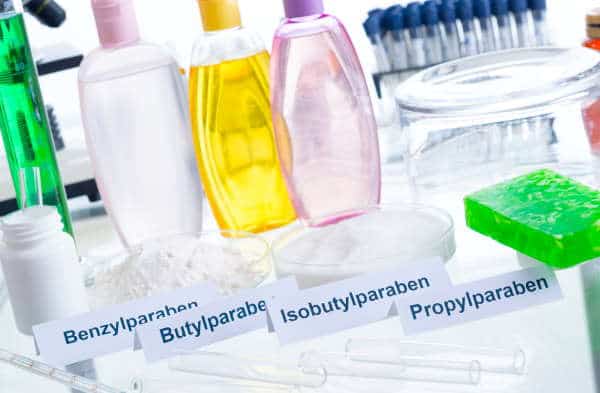
SLS, MEA, DEA, and TEA. These are collectively known as Ethanolamine compounds. These are also found in many consumer products including cleaning, personal, and beauty products. From spaps to hair conditioners, shaving creams to eye shadows, they’re found in a lot of products that we usually have in our homes.
SLS, or sodium lauryl sulphate is a cleaning chemical agent that helps products to foam or froth. SLS can irritate the skin and sting the eyes, so it’s best to keep them away from your baby because of that reason alone. But large amounts of SLS, especially when contaminated with other byproducts, can have negative effects on the kidneys, liver, and central nervous system.
Synthetic perfumes/fragrances. What are synthetic fragrances anyway? Well, they’re fragrances that are chemically produced to mimic natural fragrances. They’re found in so many of the products we use. Frequent exposure to synthetic fragrances and perfumes have been associated with allergies, dermatitis, and other harmful effects on the reproductive and respiratory systems.
Sulfates. Sulfates include SLS – which we talked about above. Sulfates are mostly found in shampoos and washes and help them mix into water. They’re what produces the lather. Unless you purposefully purchase shampoos and washes that are free from sulfates, we’re almost certain the bottle in your shower contains sulfates.
And in low concentrations, they aren’t really harmful. But frequent use of them (especially if you’re bathing your child more than 3 times a week) can strip away the skin and hair’s natural oils and proteins.
Rumors have been circulating for years that sulfates are linked to cancer. This isn’t scientifically proven. But when you’ve got a precious baby, it’s better to keep products containing sulfates away from them.
Formaldehyde. This is a naturally occurring colorless gas that dissolves easily in water. And when it does, it’s called formalin. It’s commonly used as a preservative in many food products, as well as medicine and cosmetic/personal care products such as soaps and shampoos. Formaldehyde is normally present in very low levels in our air and is used in many soaps, shampoos, and other products in order to prevent the growth of bacteria.
Constant exposure to formaldehyde has been shown to cause cancer during animal laboratory testing. It can also cause other health effects such as coughing, wheezing, nausea, and skin irritation.
Colorants/Dyes. Artificial or synthetic colors and dyes are chemicals that are added into products in order to change the shade/color of things like soaps, lotions, shampoos, and bubble baths. Colorful washes can be very attractive to babies and little children. The problem is, they’re usually made of up many different chemicals and it’s a bit difficult to know exactly what you’re exposing your skin to. Some artificial colors are made from coal tar or can contain lead. These toxins and cause a great range of skin issues such as acne and pore-blocking. But what’s worse – they can be absorbed into your body will they can wreak even more havor.
In fact, some dyes have even been linked to thyroid and kidney tumors. Your safest bet is to avoid products with artificial colors and dyes altogether.






